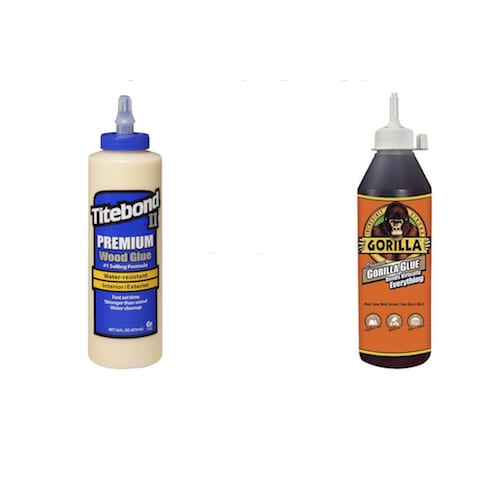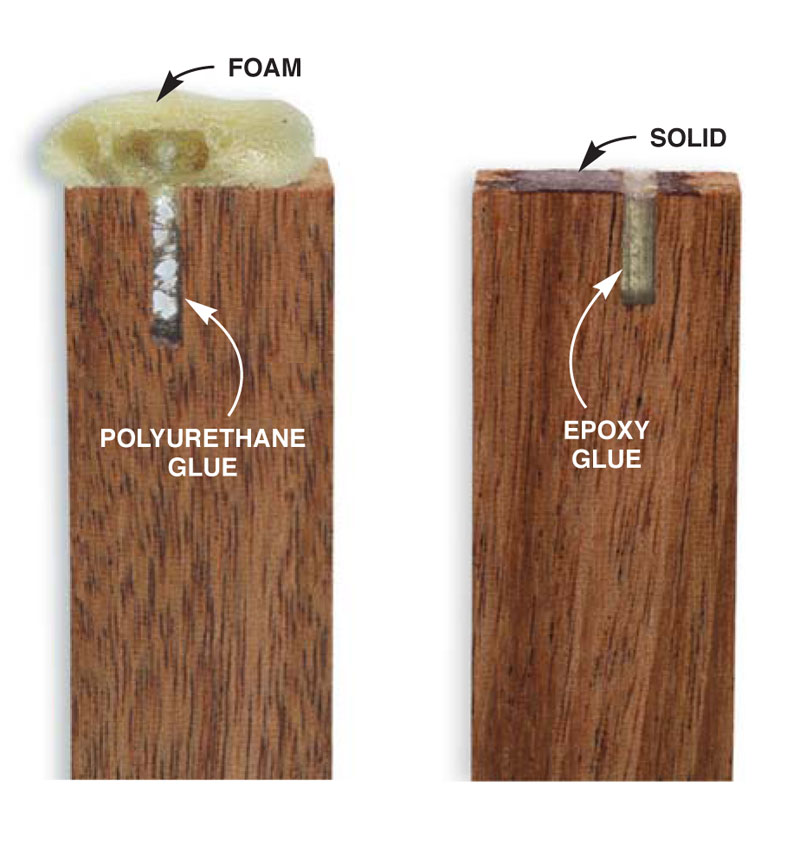Curious to know if wood glue sticks to polyurethane? You’ve come to the right place!
Whether you’re working on a DIY project or just exploring the world of adhesives, it’s essential to understand the compatibility of different materials. We’ll dive into the topic and give you the lowdown on whether wood glue and polyurethane make a reliable bond.
But hold on tight, there’s more to this than meets the eye! Stick around as we uncover the secrets behind this adhesive puzzle.

Does Wood Glue Stick to Polyurethane: Exploring the Bond
Wood glue and polyurethane are both common materials used in woodworking projects. However, do they work well together? Can wood glue effectively bond with polyurethane? In this article, we will delve deep into the topic to provide you with all the information you need. From the properties of wood glue and polyurethane to tips on achieving a strong bond, we’ve got you covered.
So, let’s get started and explore the world of wood glue and polyurethane!
The Role of Wood Glue in Woodworking
Wood glue, also known as carpenter’s glue or PVA glue, is a popular adhesive used in woodworking projects. It is designed to create a strong bond between two pieces of wood, allowing them to adhere firmly together. Wood glue works by penetrating the porous surface of the wood, bonding with the wood fibers, and solidifying as it dries.
One of the key properties of wood glue is its ability to provide a strong, durable bond. It has good tensile strength, meaning it can withstand pulling or stretching forces. The bond created by wood glue is also resistant to moisture, making it suitable for both indoor and outdoor applications. Additionally, wood glue dries clear, ensuring that the bond doesn’t affect the aesthetic appeal of the wood.
The Characteristics of Polyurethane
Polyurethane, on the other hand, is a versatile material widely used in various industries, including woodworking. It is a type of plastic that can be rigid or flexible, depending on the formulation. In woodworking, polyurethane is commonly used as a protective finish for wooden surfaces. It provides a durable and waterproof coating that enhances the appearance and longevity of the wood.
Polyurethane is known for its excellent adhesion properties, making it adhere well to a wide range of surfaces, including wood. When applied as a finish, polyurethane creates a strong protective layer on the wood surface, guarding it against scratches, stains, and moisture. However, it is important to note that polyurethane acts more as a protective layer rather than an adhesive itself.
The Compatibility of Wood Glue and Polyurethane
Now that we understand the properties of wood glue and polyurethane, let’s address the primary question: Does wood glue stick to polyurethane? The short answer is yes, wood glue can stick to polyurethane. However, there are some considerations to keep in mind for achieving a strong and reliable bond.
First, it is crucial to prepare the wood surface properly. Both wood glue and polyurethane require a clean, dry, and smooth surface to bond effectively. Any dirt, dust, or existing finish on the wood can hinder the adhesion process. Thus, it is recommended to sand the wood surface, removing any existing finish and ensuring a clean substrate for both materials to bond.
Second, choose the right type of wood glue. There are various types of wood glue available, including interior, exterior, and waterproof variants. Depending on the specific woodworking project and the potential exposure to moisture, select a wood glue that suits your needs. Ensure that the wood glue you choose has good bonding strength and is compatible with polyurethane.
Third, apply the wood glue evenly and generously. When using wood glue to bond wood and polyurethane, apply a liberal amount of glue to one of the surfaces. Use a brush or spreader to spread the glue evenly, ensuring full coverage. Press the surfaces together firmly and clamp if necessary to create a strong bond.
In conclusion, wood glue can indeed stick to polyurethane, but proper preparation, selection of the right wood glue, and adequate application techniques are crucial for achieving a strong and reliable bond. Follow the tips mentioned above, and you’ll be on your way to creating sturdy and long-lasting woodworking projects with wood glue and polyurethane. Happy woodworking!
Key Takeaways: Does Wood Glue Stick to Polyurethane?
- Wood glue does not stick well to polyurethane surfaces.
- Polyurethane is a smooth and non-porous material, making it difficult for wood glue to adhere.
- For a strong bond, it is recommended to sand or roughen the polyurethane surface before applying wood glue.
- Using a primer specifically designed for polyurethane can also improve the adhesion of wood glue.
- It is important to carefully follow the instructions on the wood glue’s packaging for best results.
Frequently Asked Questions
When it comes to working with wood and polyurethane, there may be some questions that come up. Here are answers to a few common queries:
Can wood glue be used on polyurethane?
Although wood glue is designed specifically for bonding wood surfaces together, it may not adhere well to polyurethane. Wood glue is formulated to penetrate porous wood fibers and create a strong bond. However, polyurethane has a smooth and non-porous surface, which may make it difficult for wood glue to stick effectively.
If you are trying to attach wood to a polyurethane surface, it is best to explore alternative adhesive options that are more suitable for bonding non-porous materials. Epoxy glue, for example, could be a better choice as it is designed to bond smooth surfaces like polyurethane.
What adhesive works best for sticking wood to polyurethane?
When it comes to bonding wood to polyurethane, a suitable adhesive option is epoxy glue. Epoxy glue is designed to bond surfaces that are smooth and non-porous, making it more effective than wood glue in this scenario. Before applying epoxy glue, it is important to clean and prepare both the wood and polyurethane surfaces by removing any dirt, oils, or old finishes that may hinder adhesion.
Apply the epoxy glue following the manufacturer’s instructions, ensuring an even and sufficient amount is spread across the surfaces. Then, firmly press the wood and polyurethane together, applying constant pressure. Allow the epoxy glue to cure completely before subjecting the bonded surfaces to any stress or load.
Will polyurethane stick to wood glue?
Polyurethane does not typically adhere well to wood glue. Wood glue is specially formulated to bond porous wood fibers, whereas polyurethane has a smooth and non-porous surface. As a result, wood glue may not effectively stick to polyurethane.
If you need to bond polyurethane to wood, it is recommended to use an adhesive that is specifically designed for non-porous materials. Epoxy glue, for example, is a suitable option as it can create a strong bond between smooth surfaces like polyurethane and wood.
How can I ensure a strong bond between wood and polyurethane?
To ensure a strong bond between wood and polyurethane, it is important to properly prepare the surfaces before applying any adhesive. Begin by cleaning the surfaces thoroughly to remove any dirt, dust, or grease that could interfere with bonding.
Next, consider using an adhesive that is specifically designed for bonding non-porous materials, such as epoxy glue. Follow the manufacturer’s instructions carefully, ensuring you apply the adhesive evenly and in the correct amount. Apply constant pressure while the adhesive cures to ensure a strong and reliable bond between the wood and polyurethane surfaces.
Are there any alternative methods for attaching wood to polyurethane?
If you are unable to find an adhesive that effectively bonds wood to polyurethane, you may consider alternative methods for attaching the two materials together. One option is to use mechanical fasteners, such as screws or nails, to secure the wood to the polyurethane surface.
Another alternative is to create a mechanical bond by creating slots, grooves, or notches in both the wood and the polyurethane surface, allowing them to interlock securely. This method can provide added stability and strength to the bond between the two materials. However, it is important to ensure these alternative methods do not compromise the structural integrity or aesthetics of the project you are working on.

Gluing Tips – Polyurethane Glues
Summary
Wood glue and polyurethane do not stick well together because they have different properties. Polyurethane is a type of plastic that is flexible and has a smooth, shiny finish. Wood glue, on the other hand, is designed to bond with porous materials like wood.
When you try to glue polyurethane with wood glue, it may not form a strong bond. The glue may not penetrate the smooth surface of the polyurethane, leading to a weak connection. It is best to use a specialized adhesive that is designed to work with smooth and non-porous materials like polyurethane.
In summary, if you want to stick wood and polyurethane together, it’s best to use a suitable adhesive that is compatible with both materials.
